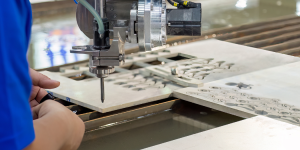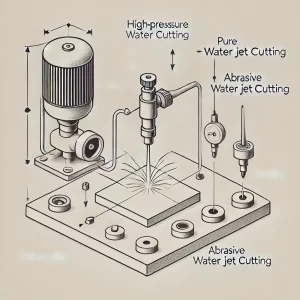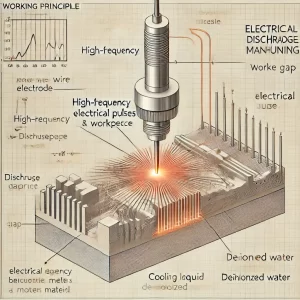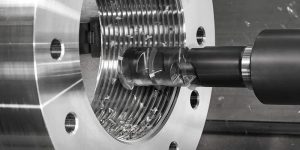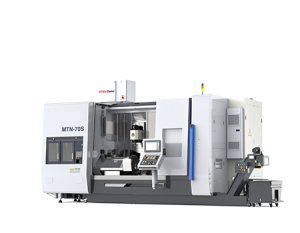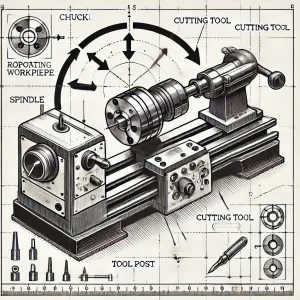In the manufacturing industry, choosing the right CNC machining equipment is crucial for both product quality and production efficiency. Different types of machining equipment not only determine the final product’s precision but also directly impact production time and costs. Especially with today’s rapidly evolving manufacturing techniques, selecting the right machining process has become a key strategy for increasing a company’s competitiveness. Faced with 3-axis and 5-axis CNC machines, many manufacturers find it essential to make the right choice between the two.
Selecting a 3-axis or 5-axis CNC machine often depends on the complexity of the production tasks and the available budget. Known for its cost-effectiveness, a 3-axis machine works well for simpler parts, while a 5-axis machine excels at handling complex shapes and achieving high-precision results. However, the two machines differ in cost and operational complexity, so selecting the right equipment requires careful alignment with specific production needs. For instance, simpler parts produced in small batches may not need the flexibility of a 5-axis machine, whereas complex, multi-surface parts benefit greatly from the efficiency a 5-axis machine provides. Considering these differences, decision-makers should weigh the functionality, flexibility, and costs to ensure the best return on investment.
To help you make an informed decision, this article explores the technical characteristics, advantages, and disadvantages of 3-axis and 5-axis CNC machining. By analyzing the ideal use cases for each machine, this guide offers practical selection advice and decision-making support, enabling you to identify the best equipment for your actual production needs and to achieve higher efficiency and greater competitiveness.
3-Axis CNC Machining: A Cost-Effective Solution for Standard Part Production
3-axis CNC machines operate by moving the tool or workpiece along the X (left-right), Y (front-back), and Z (up-down) axes. These machines handle flat cutting, drilling, and simple contouring tasks efficiently. Known for their straightforward operation and lower cost, 3-axis CNC machines provide a high-value option for producing simpler parts. For parts with flat surfaces or basic contours, 3-axis machines offer solid performance with reliable precision. They also require minimal maintenance, making them ideal for small to mid-sized businesses and startups with limited budgets.
Ideal Applications
3-axis CNC machines excel in creating panels, casings, and other simple components. They see frequent use in the automotive and electronics industries, where basic part production is common. Programming and operating these machines require lower skill levels, making them suitable for small-batch production or short-cycle projects. When production involves standardized parts and budget constraints exist, 3-axis CNC equipment remains an efficient, high-value choice.
Recommendation
When considering 3-axis CNC equipment, it’s important to assess the structural complexity and precision requirements of your parts. For flat surfaces and simpler details, a 3-axis CNC machine meets the needs fully, so investing in higher-cost equipment may not be necessary. If your parts primarily require basic cutting and shaping, a 3-axis CNC offers the accuracy needed at a lower initial cost, making it a reliable choice for foundational machining tasks.
5-Axis CNC Machining: The Flexible and Efficient Solution for Complex Parts
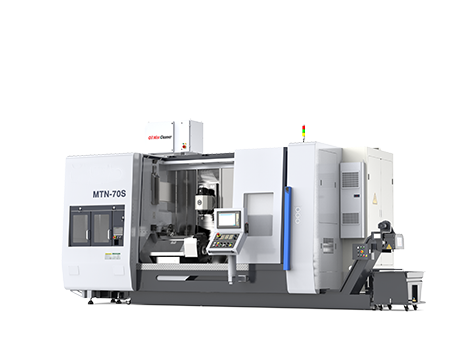
Unlike 3-axis machines, 5-axis CNC machines allow for additional movement with two rotating axes (A and B), enabling multi-angle access to the workpiece. This flexibility lets 5-axis machines tackle intricate geometries and parts with complex angles, providing high-precision machining without frequent repositioning. With 5-axis CNC, a part can be machined from multiple angles in one setup, making these machines exceptionally efficient for complex surfaces, molds, and parts with detailed multi-surface features. This capability greatly increases both precision and productivity.
Ideal Applications
5-axis CNC machines are well-suited for manufacturing high-precision, complex components such as aerospace turbine blades, medical devices, and molds. These machines handle workpieces that require complex angles, curves, and high surface quality with ease. By reducing fixture changes, they save time and reduce errors, making them ideal for challenging geometries.
Recommendation
For projects that require batch production of complex, high-precision parts, 5-axis CNC machines deliver exceptional efficiency. Although the initial cost may be higher, their benefits in handling intricate tasks result in long-term returns. For parts with extremely tight tolerance needs, a 5-axis CNC machine can minimize repositioning errors, making it the ideal choice for precision manufacturing.
3-Axis vs. 5-Axis CNC Comparison: Which Machine Suits Your Project Best?
The table below compares the main features of 3-axis and 5-axis CNC machines, helping you quickly understand each option’s advantages and limitations:
| Comparison Factors | 3-Axis CNC | 5-Axis CNC |
| Tool Movement | X, Y, Z axes | X, Y, Z plus A and B rotation axes |
| Best Suited for | Flat surfaces and simple contours | Complex curves, multiple surfaces, multi-angled parts |
| Programming Complexity | Straightforward, works with standard programming | Advanced, requires sophisticated CAD/CAM programming |
| Equipment Cost | Lower, ideal for budget-conscious projects | Higher, suited for precise and complex tasks |
| Maintenance Needs | Casings, panels, basic components | Turbine blades, molds, parts with complex geometries |
| Maintenance Needs | Low, simple operation | High, requires regular upkeep and specialized management |
Here’s What to Know About 3-Axis and 5-Axis CNC Machines
What are the main advantages and disadvantages of 3-axis and 5-axis machines?
3-axis machines cost less and have simpler programming, making them a great choice for producing high volumes of parts with basic structures. On the other hand, 5-axis machines excel at efficiently handling complex parts, as they reduce the need to reposition the workpiece multiple times. However, 5-axis machines come with higher purchase costs, more complex programming, and greater maintenance needs.
When should you choose 3-axis machining, and when is 5-axis machining more suitable?
When parts have a simple design, the production batch size is small, or the budget is limited, 3-axis CNC machining is usually the more economical option. But when parts require complex curves or multi-surface details and larger batch sizes, 5-axis CNC machines deliver greater precision and efficiency.
Does 5-axis CNC really offer better precision than 3-axis CNC?
Not necessarily. While 5-axis CNC machines indeed improve precision on parts with complex geometries, the precision difference between 3-axis and 5-axis CNC machines is minimal for simpler parts. The primary advantage of 5-axis machines lies in their ability to reduce errors caused by repositioning the workpiece.
How different are the programming and operational complexities of the two machines?
3-axis machines offer simpler programming and easier operation, suitable for basic CNC programming skills. Meanwhile, 5-axis machines require advanced CAD/CAM programming knowledge and often need professional training for optimal use.
What is the cost difference in purchasing and maintaining 3-axis and 5-axis CNC machines?
The initial cost of a 3-axis machine typically ranges from $25,000 to $50,000, with relatively low maintenance costs. A 5-axis machine, however, may cost anywhere from $80,000 to over $500,000 and requires more frequent maintenance due to its additional axes, along with regular inspections to ensure optimal performance.
Which machine offers greater production efficiency?
5-axis machines stand out in terms of efficiency for handling complex parts, thanks to their multi-axis flexibility and reduced need for re-clamping. However, when manufacturing simpler parts that don’t require multi-surface machining, 3-axis machines can achieve high productivity as well.
What factors should you consider when choosing between a 3-axis and a 5-axis machine?
It’s essential to evaluate the complexity of the part, the precision requirements, budget, production batch size, and machine usage frequency. For simpler projects with limited budgets, a 3-axis machine offers the best value. When aiming for high-precision, multi-angle machining on intricate parts, a 5-axis machine is the superior choice.
Can a 5-axis CNC machine fully replace a 3-axis machine?
Not necessarily. Despite its versatility, a 5-axis machine may not match the cost-effectiveness and efficiency of a 3-axis machine for simpler parts. For certain projects, a 3-axis machine remains the better option.
Is it possible to upgrade an existing 3-axis CNC machine to a 5-axis?
Upgrading a 3-axis machine to a 5-axis usually involves high costs and significant complexity, as additional rotary axes and a different control system are needed. In most cases, purchasing a dedicated 5-axis machine proves more cost-effective.
Why Choose Minnuo CNC Equipment?

When selecting CNC equipment, finding a supplier that combines cost-effectiveness with high quality is essential. Minno is dedicated to providing top-tier 3-axis and 5-axis CNC machines, designed to meet a wide range of complex machining needs. Here are several reasons to choose Minno:
- High Precision and Stability: Minno machines deliver high-precision results with excellent stability, reducing downtime and boosting long-term productivity. This reliability ensures consistent performance for demanding projects.
- Energy-Efficient, Eco-Friendly Design: Minno optimizes power usage to reduce energy consumption, supporting eco-friendly production while helping clients control operating costs effectively.
- Flexible Multi-Functionality: Minno equipment supports a wide range of functions, including turning, milling, and laser cutting, allowing customers to handle various production needs with ease. This versatility makes Minno an adaptable solution for diverse tasks.
- Comprehensive Technical Support: Minno’s experienced technical team offers complete support, from installation and calibration to training and maintenance, ensuring that machines operate at peak efficiency at all times.
Conclusion
Whether you focus on small-batch production or large-scale manufacturing, choosing the right CNC equipment and supplier directly impacts your success. Understanding the unique features of 3-axis and 5-axis CNC machines and their applications allows you to better plan your production. Minno not only provides high-quality machines but also offers extensive support services to help make your production more efficient and competitive. Choose Minno to elevate your manufacturing and gain an edge in the market.







